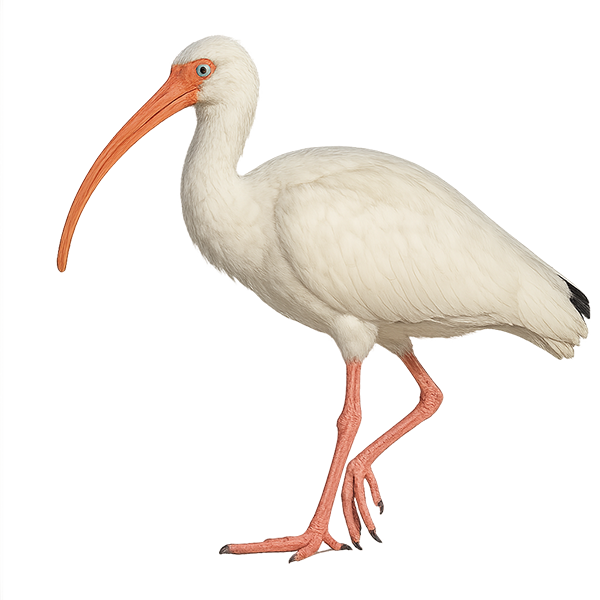Your wildlife photography guide.
Explore the american white ibis in detail, study its behavior, prepare your shots.
Where to observe and photograph the american white ibis in the wild
Learn where and when to spot the american white ibis in the wild, how to identify the species based on distinctive features, and what natural environments it inhabits. The WildlifePhotographer app offers tailored photography tips that reflect the american white ibis’s behavior, helping you capture better wildlife images. Explore the full species profile for key information including description, habitat, active periods, and approach techniques.
American White Ibis
Scientific name: Eudocimus albus

IUCN Status: Least Concern
Family: THRESKIORNITHIDAE
Group: Birds
Sensitivity to human approach: Suspicious
Minimum approach distance: 10 m
Courtship display: March to May
Incubation: 20-23 jours
Hatchings: April to June
Habitat:
Wetlands, mangroves, marshes
Activity period :
Primarily active during the day, with peak activity in the morning and late afternoon.
Identification and description:
The American White Ibis, Eudocimus albus, is an elegant and graceful bird found mainly in wetlands and coastal areas of the Americas. It is easily recognizable by its bright white plumage, long curved reddish bill, and red legs. Adults measure about 65 cm in length with a wingspan of 95 cm. They primarily feed on small aquatic invertebrates, which they capture by probing the mud with their bill. American White Ibises live in colonies and are often seen in large groups. Their flight is characterized by regular wing beats and gliding. Although they are mainly diurnal, they can be active at dawn and dusk.
Recommended lens:
400mm – adjust based on distance, desired framing (portrait or habitat), and approach conditions.
Photography tips:
To photograph the American White Ibis, it is advisable to use a telephoto lens of at least 400mm to capture precise details without disturbing the bird. The best times for photography are early morning or late afternoon when the light is soft and golden. Try to capture the bird in flight to showcase its wingspan and elegance. Be patient and discreet, as although the White Ibis is relatively tolerant, it may move away if you get too close.
The WildlifePhotographer App is coming soon!
Be the first to explore the best nature spots, track rutting seasons, log your observations, and observe more wildlife.
Already 1 439 wildlife lovers subscribed worldwide

